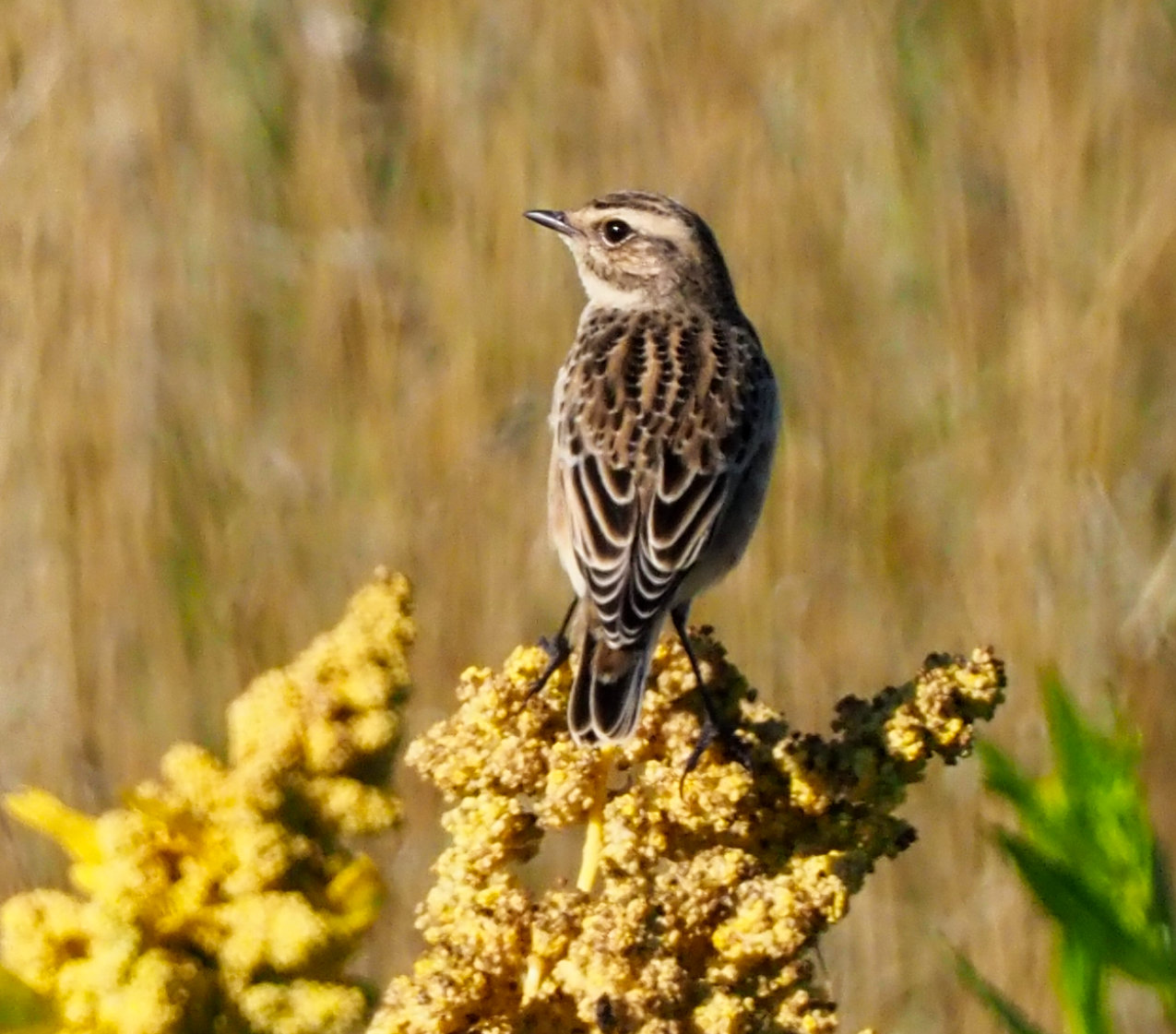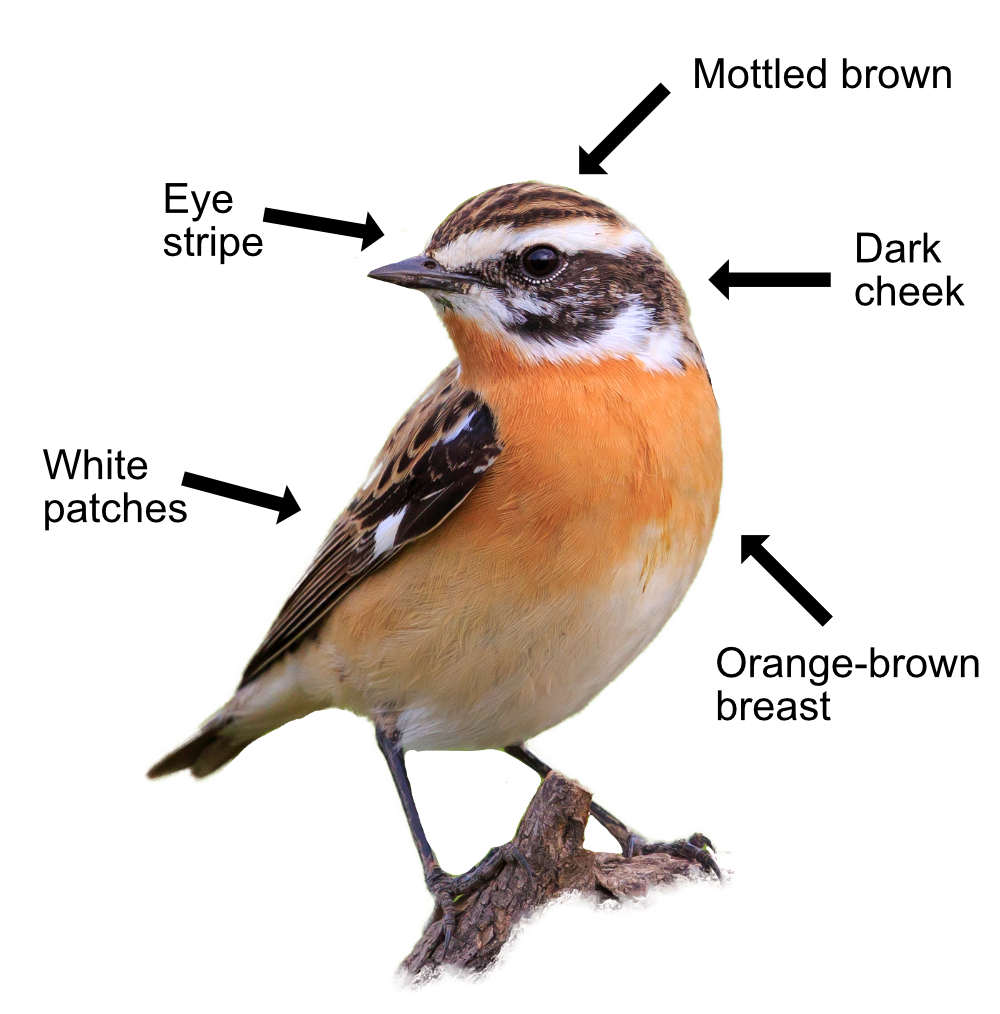
The Whinchat is a summer visitor, closely related to the Stonechat (which stays here all the time). The wimpy Whinchat prefers to spend its winter in tropical Africa rather than chilly Britain. It is mainly found in the uplands of England and Scotland, though might be spotted anywhere as it migrates. The Whinchat likes open country like grasslands, meadows, and railway verges, often being seen perching upright on posts, flicking its tail and wings.
The male Whinchat looks similar to a Stonechat but is lighter in colour and has a distinctive pale eye-stripe. Smaller than a Robin, they have a mottled brown head and back, dark cheeks, white patches on their wings, and an orange-brown breast. The female is paler and less well marked. Whinchats look cross-shaped when flying with pointed wings, white side patches to their tails and a white shoulder bar. Their call is a soft clicking "tac, tac".

Whinchats perch in high places, ready to pounce on insects and other small invertebrates as they wander by. They mainly like to eat mayflies, moths, beetles, caterpillars, and spiders, though will also eat seeds, berries and worms.
Once arrived here, they settle down to nest in May or June. Mum builds a cup-shaped nest on the ground in dense vegetation from grass, leaves and moss. The 4-7 eggs hatch after 12 days and the youngsters are fed by both mum and dad. They leave the nest 12 days later, while still too young to fly, and fledge after another week. They remain dependent on mum and dad for 2 more weeks before finally leaving home. Mum and dad will often have two broods then do their moult in August, ready to head back to sub-Saharan Africa to live it up in places like Ghana or Nigeria.
About 50,000 pairs come to Britain though numbers have more than halved since 1995. The cause is unknown, though likely due to the loss of habitat. Nests are vulnerable to predators which include Weasels, Stoats, Crows, Magpies and small raptors like Merlin and, to top it all, are sometimes parasitised by the dastardly Cuckoo. The poor Whinchats have a tough time and, unsurprisingly, are on the Red List. They are short-lived birds, typically only surviving for 2 years. The oldest recorded Whinchat lived for just over 5 years.
Their Latin name 'saxicola ruberta' means 'small rock dweller' from the Latin 'saxum' for 'rock' and 'incola' for 'dwelling' and 'ruberta' for a 'small bird'. The English name comes from 'whin', an old name for gorse, which is often found where they breed, and 'chat' from the noise of their calls.